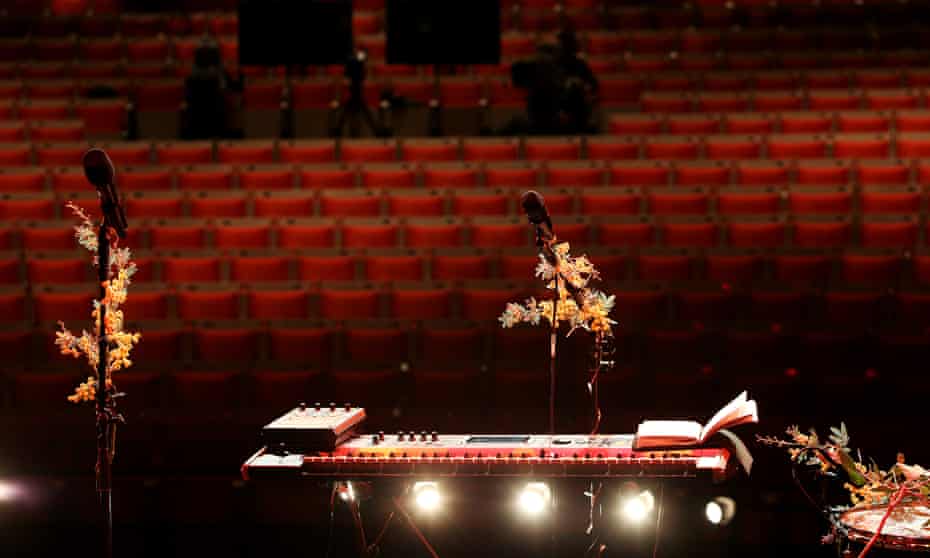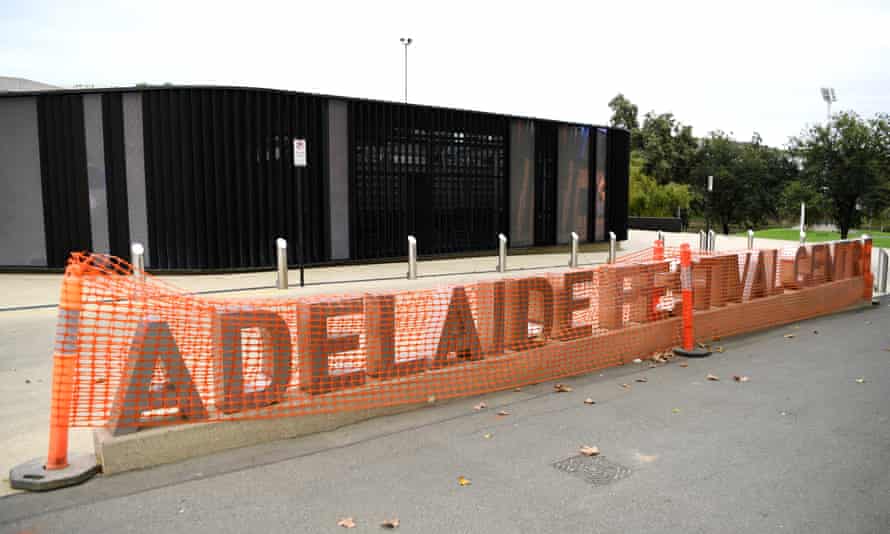Where were you exactly one year ago?
I was in Adelaide for festival season – and in typical pre-pandemic fashion, I’d just come from meetings and events in Sydney, Canberra and Hobart. Unimaginable now.
The very last show I saw was the magnificent Howl by experimental art organisation Aphids, as part of the Biennale of Australian Art. It was a rousing, galvanising performance – a bold parade of iconic artworks, reinterpreted onto queer bodies – that heightened my passion for the industry, invigorating the energy required of such demanding advocacy work.
In the long months that followed, I would come to draw on that feeling a great deal.
Talk of Covid-19 reaching Australia was constant that week. New cases kept appearing, public restrictions were imposed, and a cruise ship that no one had ever heard of was en route to Sydney. Then, on 13 March, the Melbourne International Comedy festival was the first major event to announce it wouldn’t be going ahead – and Australia’s arts industry sprang to action stations.
My tightly-scheduled calendar became page after page of scribbled entries crossed out in diagonal reds, one after the other. Within a fortnight I’d held 17 colleague meetings, five media interviews and three political briefings, taken calls at all hours, and formed a national industry roundtable which would go on meeting weekly throughout the crisis.
We quickly realised we were on the brink of the most debilitating disruption to our cultural lives that most Australians would ever know.
For an unknown period of time, we would have no means for coming together to share those experiences that make us laugh and cry and fist-bump and wonder and think. No shows to see, no galleries to explore, no unexpected encounters, no hands to hold.

And so 2020 rapidly became a time of great focus. Artists and companies were seeing their entire year’s work vanish – and it would take the government some time to catch on to what this meant for all Australians, as well as for the economy. A modest industry package was made available at the end of the year, and with jobkeeper due to end in just weeks from now, industry leaders still have grave concerns.
Throughout the pandemic, the Australian government has preferred to be a follower rather than a leader. No vision has been articulated for a stronger, more resilient future, guided by the “creative imagination” that leading epidemiologist Dr Michael Osterholm says is urgently needed. It’s been unclear whether we’re supposed to be “quiet Australians” or instead “unmute” ourselves. We’ve seen a curious insistence on a “snap back to the normal arrangements” that got us into this situation: poor national administration of quarantine, aged care and vaccination; poor employment security for frontline casual workers; poor understanding of the links between creative workers, the economy, and the cultural confidence we all need to imagine that stronger future together.
And so it’s been up to artists to focus on creating Australia’s future at the same time as reassessing their own livelihoods. Throughout 2020 I’ve had the privilege of seeing artists and colleagues at their very best – and at their worst. I’ve seen the depth of their commitment, the sharpness of their expertise and the generosity of their vision. I am still in awe of their work – and their courage.
These are complicated discussions to have, because arts and culture are complex: they encourage us to search our emotions, challenge our values, and gather together in new and exciting ways. They’re also complex in terms of working models – the cultural and creative economy is composed of countless collaborative platforms and business models of varying shapes and sizes.
In an uncontained global pandemic, continued shutdowns are inevitable – and they’ll happen when we least expect them. Our cities and regions are redesigning their streets and public spaces, and so too must governments redesign their thinking.

Policy responses need to look forward to an unknown future in ways that give us confidence. Just as the homebuilder scheme was offered without a funding cap, so too do we need a more responsive approach to the industries that inspire us most, while also supporting our tourism and hospitality sectors.
Most importantly, we need a civic culture that plans for unintended consequences: guarantee against loss schemes; subsidies whose eligibility is triggered by clearly defined thresholds; industry-specific packages that are sophisticated, developed in close consultation, with the best potential for lasting impact.
One year on, we’re now tentatively re-emerging. Last week I ventured out for my first big gathering at the newly opened Collingwood Yards, welcomed again by Aphids and also their neighbours, sound art organisation Liquid Architecture. It was a thrilling evening’s talks, screenings, performances and experiments – and emotionally quite overwhelming, as we all kept saying in greeting one another.
Creating Australia’s future is indeed an overwhelming challenge. Australia’s artists look to our political leadership as partners in this important work, daring to envision a future that strengthens us all.
This content first appear on the guardian
